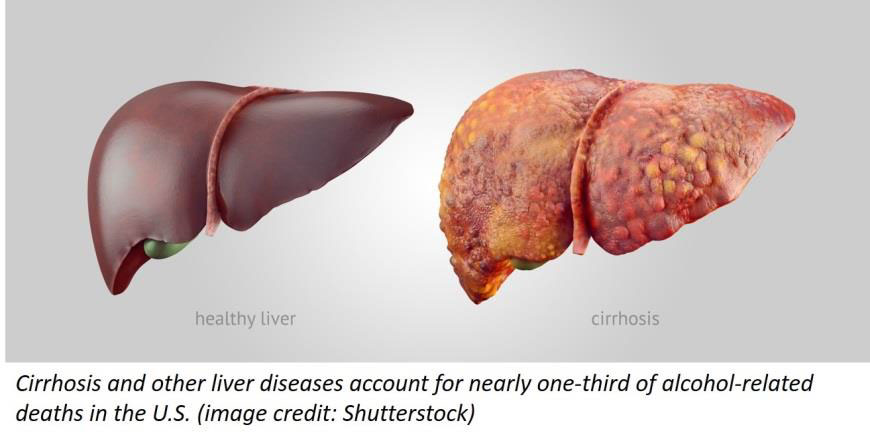Joseph R. Anticaglia MD
Medical Advisory Board
There has been a worrisome increase in alcohol use among women and the elderly in the United States since 1999. Alcohol Use Disorder, AUD “is a chronic relapsing brain disease characterized by compulsive alcohol use, loss of control over alcohol intake, and a negative emotional state when not using.” In 2017, 80,220 American deaths were associated with AUD.
AUD is a significant factor in the decline of the life expectancy in the United States. A study published in January 2020 by the National institute on Alcohol Abuse and Alcoholism (NIAAA) examined the death certificates each year from 1999 to 2017. It identified an increased number of deaths which were linked to AUD. Among women, the death rate surged 85% during this period because of alcohol use disorder.
Concerning the elderly, researchers at (NIAAA) published an article in JAMA Psychiatry on August 9, 2017. The study compared the drinking habits of older adults in the time frame from 2001-2 to 2012-13. The researchers reported, among adults over the age of sixty-five, an increase of 65% in “high risk drinking.”
Life Expectancy
More people are drinking in the United States and more Americans are dying because of AUD. According to the Center for Disease Control and Prevention (CDC), those who abuse alcohol shorten their lives by many years.
We’re familiar with the short-term effects of alcohol abuse such as dizziness, G. I. upset, hangovers, blackouts and accidents to self and others when DUI.
Not enough people consider the long-term damaging effects of excessive drinking. It causes a heavy toll on self-esteem, the family, finances, the community as well as physical and emotional troubles.
Co-morbidity is the simultaneous presence of two or more chronic conditions or diseases in a patient. Over time, AUD can lead to chronic medical conditions. Among the chronic conditions associated with AUD are liver disease, brain damage, pancreatitis, cancer, suicide, psychological problems, strokes, and vitamin deficiencies. Such disorders can shorten the life expectancy of women and the elderly who are trapped by AUD.
What is a Standard Drink?
A standard drink is any drink that contains about fourteen grams of pure alcohol (about 0.6 fluid ounces or 1.2 tablespoons).
Standard Drink Equivalents
U. S. Standard Drink Sizes 12 ounces 5% ABV beer
Eight ounces 7% ABV malt liquor
Five ounces 12% ABV wine
(Examples: gin, rum, vodka, whiskey) 1.5 ounces 40% ABV (80 proof) distilled spirits

ABV-Alcohol by volume
What is Excessive Alcohol Use?
Excessive drinking includes binge drinking, heavy drinking and any drinking by pregnant women or people under the age of twenty-one.
Binge Drinking
For women, four or more drinks consumed on one occasion
For men, five or more drinks consumed on one occasion
Heavy Drinking
For women, eight or more drinks per week
For men, fifteen or more drinks per week
Who Should Not Drink?
- Pregnant women
- Those under the age of 18 years
- People taking certain medications
- Individuals with certain medical conditions
- Persons recovering from Alcoholism
- Situations requiring alertness e. g., driving, at work or certain recreational activities

People with alcohol use disorder continue to drink despite the negative impact it has on family, work, friends, and their own health. Women and the elderly suffering from AUD need the understanding of society and the help of professionals to extricate them from this brain disease.
Glossary:
ABV: Alcohol by Volume — Unlike hard liquor, beers are not measured by proof, but most commonly by ABV. This number simply lets you know what percentage of your beer contains alcohol
What Is High-Risk Drinking—Alcohol Use?
High-risk alcohol use is defined by the National Institute on Alcohol Abuse and Alcoholism (NIAAA) as more than four drinks per day or fourteen in a week for men, and more than three drinks a day or seven per week for women.
Alcohol-Related Deaths: More recent statistics
An estimated 88,000 people ( 62,000 men and 26,000 women) die from alcohol-related causes annually, making alcohol the third leading preventable cause of death in the United States.
Alcohol Facts and Statistics — National Institute on Alcohol — NIH
https://www.niaaa.nih.gov > publications > brochures-and-fact-sheets > alcoh…
Reference
- Aaron White, PhD, I-Jen P. Castle, PhD, Ralph Hingson, ScD, Patricia Powell, PhD. Using death certificates to explore changes in alcohol-related mortality in the United States, 1999–2017 Alcoholism: Clinical and Experimental Research. Published online January 8, 2020.
- National Institute on Alcohol Abuse and Alcoholism (NIAAA); Alcohol-related deaths increasing in the United States https://www.niaaa.nih.gov; January 8, 2020
- Jürgen Rehm; Alcohol Use is a Key Factor in Recent Decreases in Life Expectancy in the United States; Alcoholism, December 24, 2019
- CDC-Center for Disease Control and Prevention; Alcohol Use and Your Health; Alcohol and Public Health
- Vivia McCutcheon, PhD; Alcohol Use as a High-Risk Health Behavior; Institute for Public Health, November 29, 2017
- Alcohol Facts and Statistics — National Institute on Alcohol — NIH
This article is intended solely as a learning experience. Please consult your physician for diagnostic and treatment options.

